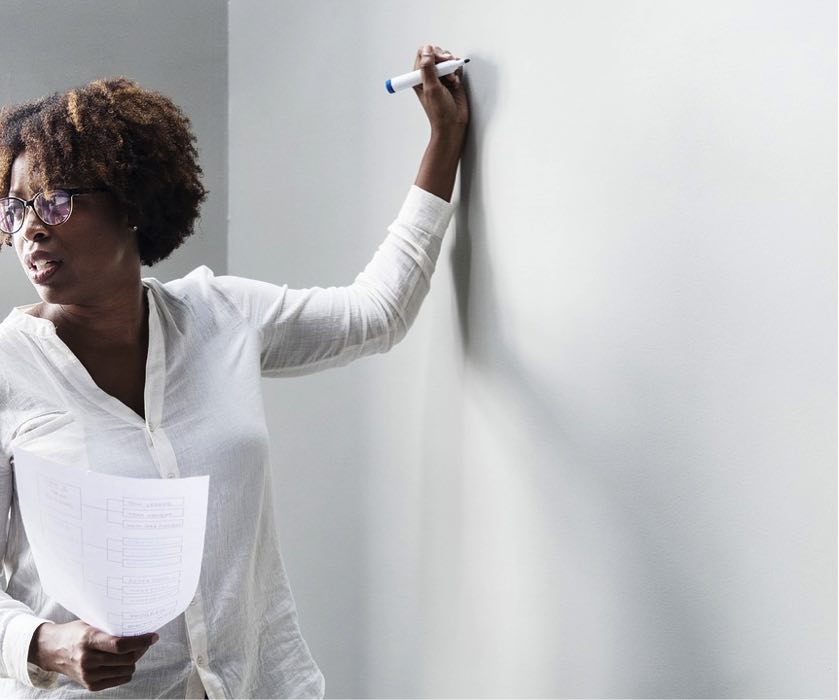Science is a critical subject for students to learn while they are in school because it plays such an essential role in everyday life and leads to many possible career choices. This has always been the case, but it is even more important in the high-tech age we live in. The world today demands of students at least a rudimentary knowledge of both the principles of science as well as how to apply them to solve real-life problems.
But teaching science in a way that allows students to learn the various aspects of the topic effectively is a real challenge for teachers. For students to learn science properly, they must be engaged both mentally and physically as much as possible in the tasks involved. That's where techniques such as hands-on and minds-on learning come into play.
What is hands-on, minds-on learning?
The ultimate goal is to get students at any level of education to become as mentally and physically engaged as possible in the learning process, regardless of the subject they are studying. The basic idea is for students to break out of their usual passive mode of learning that primarily involves listening to a teacher, taking notes and answering the occasional question. Instead, they are asked to in fact DO something during the learning process that has them actively using ALL of their senses. Doing something also means involving a student's brain in thinking about what is going on around them as he or she tries to learn science. All this active involvement makes for a powerful combination that dramatically enhances learning.
Use of hands-on, minds-on learning does precisely that and is far more effective than traditional learning methods because students' ability to learn any subjects placed before them is greatly enhanced. Such is especially true for highly challenging topics such as science, which often involves complex and abstract concepts. Science is notoriously difficult for many students to learn effectively so using hands-on, minds-on learning in the classroom significantly improves their chances of success.

What takes place during hands-on and minds-on learning?
As mentioned before, hands-on, minds-on learning requires students to DO something. That something involves vital things such as not only observing what's taking place in the classroom but also asking questions throughout a science experiment. It's essential that while studying science, students should use all of their senses, including taste and smell, to become as fully engaged as possible. The use of lab equipment, science kits, and technology in the learning process (e.g. PASCO science lab equipment or Fisher Scientific) is a great way to enhance the experience and to significantly facilitate student engagement.
While it's essential to have suitable materials and equipment available in the classroom, studies have shown that these tools are most effective when used in a manner that gets students fully engaged and involved in the science learning process, such as the use of games and other type of exercises. According to research, these types of activities help students create brain pathways that enhance their ability to learn and retain information.
Below are a few ideas for hands-on science learning:
Perform scientific experiments
As students progress through their high school years and beyond, they develop a greater knowledge of scientific principles. But how can they apply these principles in pursuit of new discoveries? Hands on learning empowers students to be in charge of performing (and often conceiving) an experiment in order to observe and record the ourcomes.
An experiment is a test and a set of steps taken in order to prove a hypothesis or advance the knowledge on something that is unknown. For example, rather than read about the weather cycle in a textbook a student might be tasked with creating their own mini-system in glass enclosure. Dry discussions of physics can be replaced by experiments with paper airplanes to test aerodynamics.
It is also important to remember that during an experiment, the students follow a process and record the steps at each level. This will help in spotting patterns, organizing test data and formulating results.
Learn about experiment variables
There are three types of variables in experiments: independent, dependent, and controlled variables. The independent variable is the variable the experiment is trying to test. This is the variable that can be changed by the student performing the experiment. The dependent variable is what is measured as a result of changing the independent variable. Controlled variables on the other hand stay constant in order to minimize its effect on the experiment. Students can learn the scientific method by understanding these differences.
For example, in a simple scientific experiment to determine the type of soil that results in a greater plant growth. Students could add varying types of soil (an independent variable) to classroom plants and measure height (a dependent variable), giving equal amounts of light and water to plants of the same species (all controlled variables).
Participate in a science fair or exhibition
Participating in a science fair can often take these experiments to the next step. First, students must actively research and come up with their own ideas of what they would like to test (a hypothesis) and then develop an experiment design to validate it. This shows how a student can move from studying in a classroom (often just memorizing lessons from a textbook) to applying classroom concepts in the real world (a much deeper learning). They also need to learn how to communicate their findings to a broader audience by putting their research on display.
In Summary
Learning an often complex subject like science goes a long way in helping students to develop and utilize critical thinking abilities. This is most effective with the use of hands-on, minds-on learning, which leads to higher levels of student engagement and success, stimulates their curiosity and cultivates an interest in lifelong learning. By running their own experiments, students advance their knowledge of science and learn how to setup a system or process for testing and proving their theories.